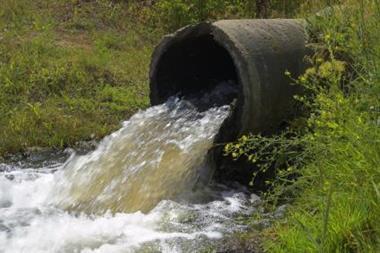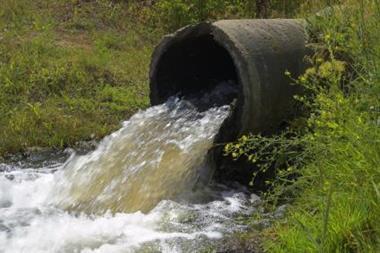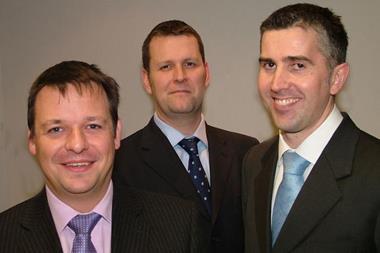The Environmental Liability Directive has been law in the UK since March last year, but many clients – and even some brokers – are still ignorant of its impact. Legislation in this area is only going to increase, so now’s the time to get informed. It might even lead to new business …
Despite fears to the contrary, the European Union Environmental Liability Directive (ELD), which finally became law in the UK a year ago last month, has not given insurance brokers sleepless nights, as they trawl through its minutiae to familiarise themselves with the detail of the legislation.
The ELD, based on the ‘polluter pays’ principle, created a raft of new liabilities for businesses, most of which are not covered by standard public liability insurance or property insurance.
But while the take-up of specialist environmental insurance has increased as the ELD worked its way onto EU member states’ statute books, most businesses, and more worryingly insurance brokers, appear to be ignorant of the directive’s impact.
Allianz head of casualty and underwriting facilities Steve Coates says: “We did some research in the middle of last year, which showed that around 75% of businesses hadn’t heard of the directive or the responsibilities that came with it.”
Coates concedes that awareness may have improved in the last six to nine months, but he is not convinced that brokers are properly advising clients about how their risk exposure has increased. “At the moment, there are a lot of people who haven’t got environmental cover and their balance sheets are exposed. If clients don’t buy it, then that’s their choice, but right now there are probably too many clients who don’t have the cover but don’t know they don’t have the cover. Brokers need to explain the changes.”
Despite the publicity surrounding the 2006 case Bartoline v Royal & Sun Alliance (where the clean-up costs of a pollution incident were deemed to not be covered by the firm’s public liability policy), many companies, and even some brokers, still believe environmental pollution is covered by their public liability insurance.
Managing consultant with Marsh’s environmental practice, David Edwin, says: “The first thing brokers need to be aware of, before they even think about the legislation, is the extent of pollution cover clients get in a public liability policy. There are a lot of gaps in that cover. The wording in public liability policies is very ambiguous, so our first message to brokers is you need to fully understand what pollution cover your client is getting and where the gaps are.”
So here’s a chance to fill those gaps, with Insurance Times’s 10 steps to educating your business – and your clients – on the impact of the ELD.
1 Understand the legislation
There is a widely held view that brokers have not got their heads around the environmental liability directive and are unable to explain its implications to clients. Therefore, it is hardly surprising that everyone Insurance Times spoke to insisted that a thorough understanding of the ELD was a top priority for brokers. ACE UK and Ireland environmental risk manager Wayne Harrington says: “It is slightly daunting for brokers. But they need to get a grip on it now, as the legislation is here and it’s going to continue to develop, so the need for environmental cover will increase.”
There is considerable overlap between the ELD and the UK’s already established environmental laws, but the ELD goes further in some respects, most notably the requirement for complementary and compensatory remediation in the case of water or biodiversity damage. The ELD makes businesses financially liable for actual or threatened damage to habitats and species on sites of special scientific interest [SSSI], in addition to traditional damage to water resources, and land contamination.
“With the ELD, we are seeing a move where it’s not just pollution liabilities that are an issue,” Marsh’s Edwin says. “Companies’ liabilities are being extended to cover environmental damage, which is broader still, and brokers need to be aware of the implications.”
2 Grasp your client’s business
In terms of the ELD, knowing your customer includes not just the activity of their business, but also its geographic location.
Zurich technical claims manager Alan Hunter says: “From a common sense perspective, you now need to know quite a bit about your policyholder, such as what potential pollutants are stored on a policyholder’s premises. The geography of where your client is based is a factor.
“If a business is beside a river, there is the risk of contaminating a water course, or if a client’s operations are near an SSSI [site of special scientific interest], or near a National Trust site, the potential for risk increases and needs to be covered.”
And we’re not just talking oil refineries or chemical plants. Much smaller businesses, such as a dry cleaners or even a hairdressers, that may use chemicals that have the potential to pollute the atmosphere, soil or waterways need to be properly assessed for environmental cover.
“A lot of people think it’s heavy industries like chemicals or steel that are at risk,” broker Gallagher environmental sales director Lorraine Thomson says. “But the reality is there are very few companies that don’t have environmental exposure. For one thing, in the UK there are thousands of SSSIs and natural habitats, and you’d be hard-pushed to find a business that isn’t close to one.”
3 Know the types of policies that are available
Some insurers may agree to write some risks into public liability cover, but the vast majority of risks arising out of the directive will require specialist policies. The choice for brokers has increased as insurers have introduced specific ELD policies, and competition among underwriters has lowered premium costs.
“We have policies starting from £400 a year now, whereas five years ago such cover would probably have cost five times that,” Thomson says. “If you did get insurance back, then it took several site surveys and investigations before the insurer would come back and say ‘okay, the site is clean and we’re willing to provide you with cover’, at which point the client would say ‘well, if the site’s clean, I don’t need the cover’.
“But the situation has changed a lot in the past couple of years. We’ve probably got around six or seven insurers in the London market writing these covers now. We also have an online quoting and binding system for environmental liability cover for Biba members, and that was unheard of five years ago.”
4 Understand the international dimension
“Brokers need to understand the differences between different countries’ implementation of the ELD if their clients are multinationals,” ACE’s Harrington says. Some EU member states are looking to introduce financial guarantees to cover potential liabilities that companies might incur through pollution. Portugal established financial guarantees provisions earlier this year. Spain was due to introduce a similar provision in April but is understood to have abandoned the plan to avoid placing further burdens on businesses during the recession. The UK has also kicked the proposal into the long grass.
“It’s up to member states to choose how they tackle those financial provisions,” Edwin says. “They can take different forms, such as bonds or insurance. In Portugal, they’ve said insurance is a good option, so they want companies with IPPC [integrated pollution prevention and control] permits to purchase environmental insurance to cover these financial provisions. Consequently, there’s been a tremendous increase in enquiries from companies in Portugal.”
5 Mind the Gap: Remember Bartoline v RSA
The Bartoline case should be a clarion call to brokers to ensure clients understand exactly what their risks are under the ELD and the need for specialist cover. “There was a precedent of sorts set in Bartoline in that even though it was a sudden and accidental pollution incident, it wasn’t covered by public liability policy, and I don’t think a lot of brokers understand the significance of that and the gaps in public liability insurance in this respect,” Thomson says.
6 Don’t forget the additional D&O responsibilities
Under the ELD, directors and officers have additional exposure and could face heavy fines and criminal penalties in the event of a pollution incident, so brokers need to ensure that current D&O policies adequately cover the potential risks. “It’s another area where brokers need to demonstrate that they are qualifying and quantifying the environmental risk and managing it,” Harrington says. “Companies have got to operate in an environmentally responsible manner, and so brokers that offer D&O insurance need to be aware of the board-level considerations of the changes.”
7 Remember it’s an opportunity too
The increasing need for environmental policies does offer beleaguered brokers the chance to develop a new revenue stream in the midst of a recession. “Market conditions are very tough,” Harrington says. “There is a tendency among broking firms to batten down the hatches and stick to what they’ve got and not put too much effort into developing something new. But environmental insurance is exactly the kind of new business that will create fresh revenue for brokers.”
8 Have a long, detailed talk at renewal
“Brokers should perhaps challenge clients about their risk of exposure,” Thomson says. “The broker needs to say to a client that, while they may have property insurance, it doesn’t cover historical pollution or gradual pollution. A client may be covered for debris removal, but that will not cover contaminated soil. Brokers have to get down to those types of specifics with clients to make them aware of their exposure.”
9 It is just another policy
“As insurers, we can educate brokers about the environmental risk legislation, and about the solutions that are available, but ultimately for brokers it’s no different to accessing any other risk,” Harrington says. “Brokers should approach it in the same manner as they would approach fire risk, or employment practice liability risk. They have to advise their clients, it’s their responsibility.”
10 Education, Education, Education
Brokers and clients need to be aware of impending changes and trends in environmental legislation because it will likely increase in coming years. “At the moment, there are too many clients and brokers for whom this is not on their radar,” Coates says. “This is an insurance need that doesn’t have a huge profile at the moment. That has to change.” IT






































No comments yet